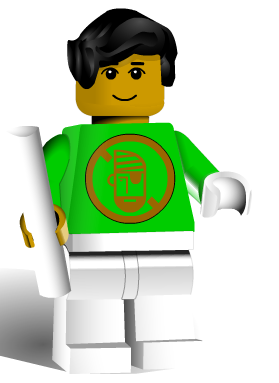- This is Marco Fahmi’s final week with the ASN-LTERN Data Portal Team and I’d like to take a moment to reflect on the contributions he has made.
- In this age of distributed teams across the cloud and e-commuting, the old style office whip around and card to sign is not possible so this is my attempt a farewell card using e-collaboration techniques.
Who is Marco Fahmi?

- Marco is a great guy and a extremely good project manager.
- I got this picture of Marco from his Semaphore project team website http://semaphoreblog.wordpress.com/team-bios/
- It is a little out of date, he has less hair than that now
Semaphore bio
Marco sold his first piece of software in 1991;
a Microsoft Excel macro that was to be used in a masters research project.
His promising career as a software developer came to an end a few months
before the Dotcom crash when he decided to leave the dungeon and see the world.
Marco has been an academic Ronin since 2000. In his spare time, he plays Capoeira,
writes a PhD dissertation, spends time with his family and
contemplates the ideal work-life balance.
Also on twitter https://twitter.com/fahmiger
I do lots of things -- sometimes upside down.
Marco’s achievements with ASN-LTERN
- A full list of Marco’s achievements in relation to recent TERN and ANDS projects is formidable and I cannot do justice here.
- I particularly want to note that Marco was instrumental in setting up the first Data Portal and worked very hard getting the Metacat Service working for the Australian Supersite Network (ASN)
- Then Marco spread the joy of that to the Long Term Ecological Network (LTERN) project
- Now the two facilities enjoy a solid platform to build our data portals on.
- Marco was also very influential in me starting to use this blog as my Open Notebook and has offered sage advice
THANKS MARCO
- Next year Marco is going to move on to other adventures.
- On behalf of myself and the rest of the team I’d like to say a big THANKYOU!
Quotable quotes by Marco
- Science Comes First… Well actually people come first, then Science.
- People Come First, then Science… Well actually money comes first, then People, then Science.
- Follow the lying person to the door of their house, if they continue lying follow them inside to see where they will stop (my paraphrasing, sorry if I muddled it up.)






